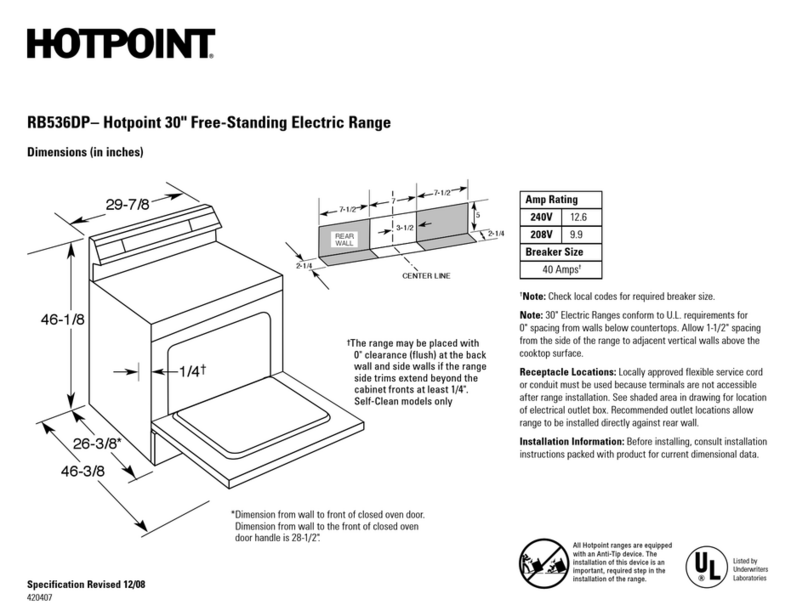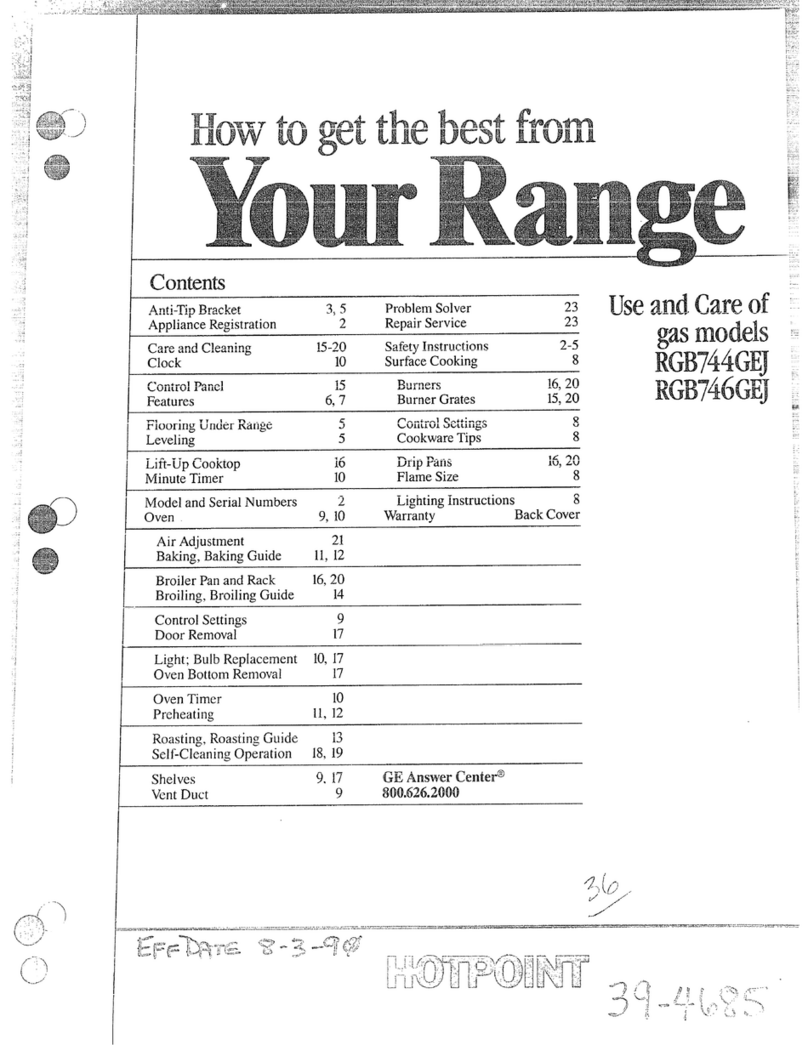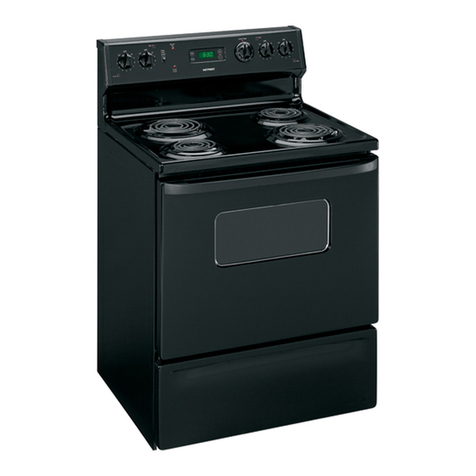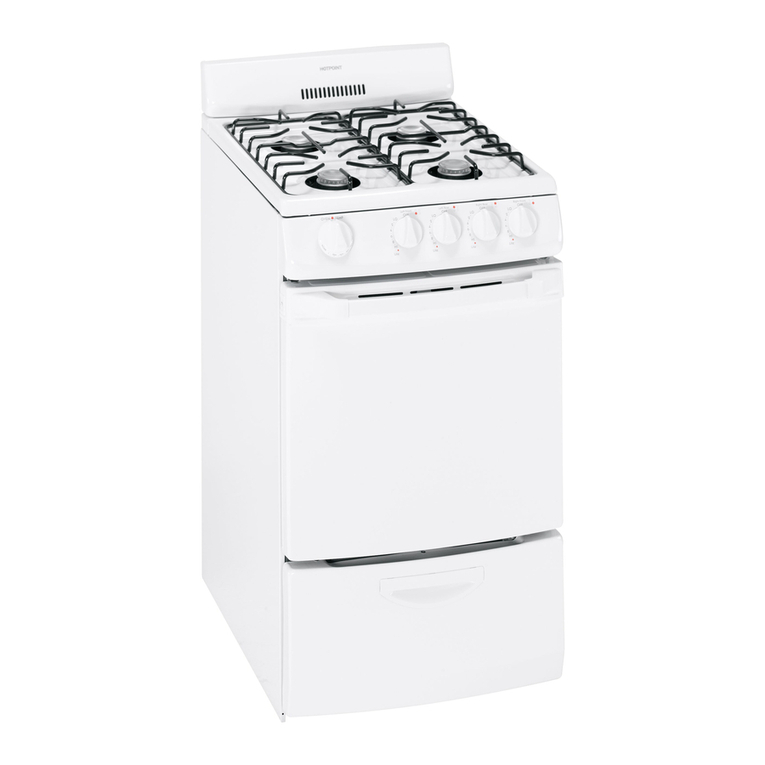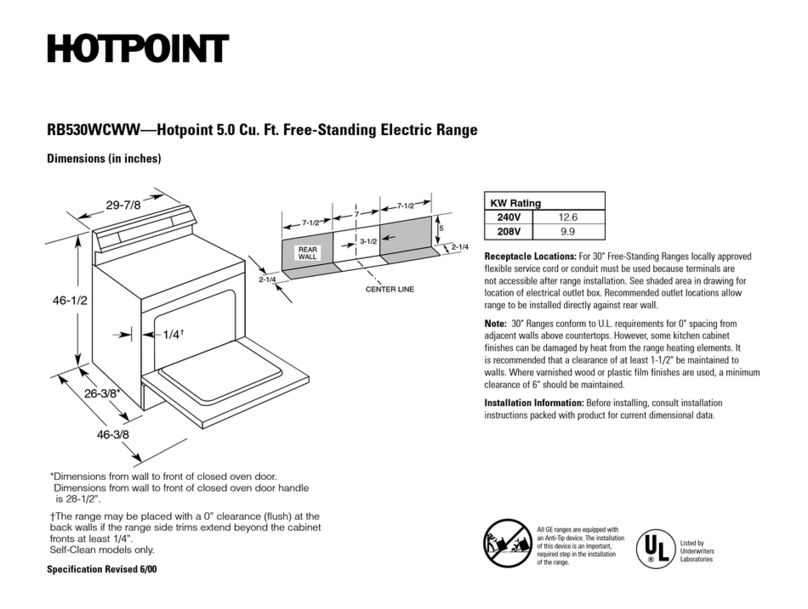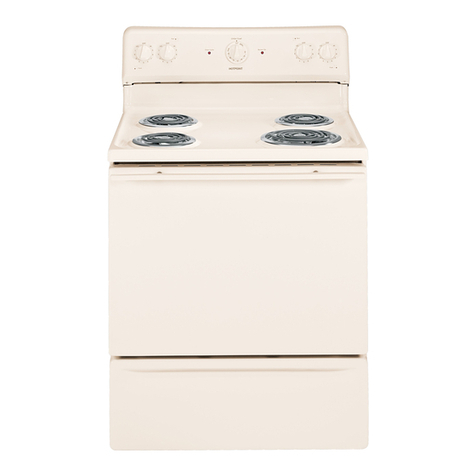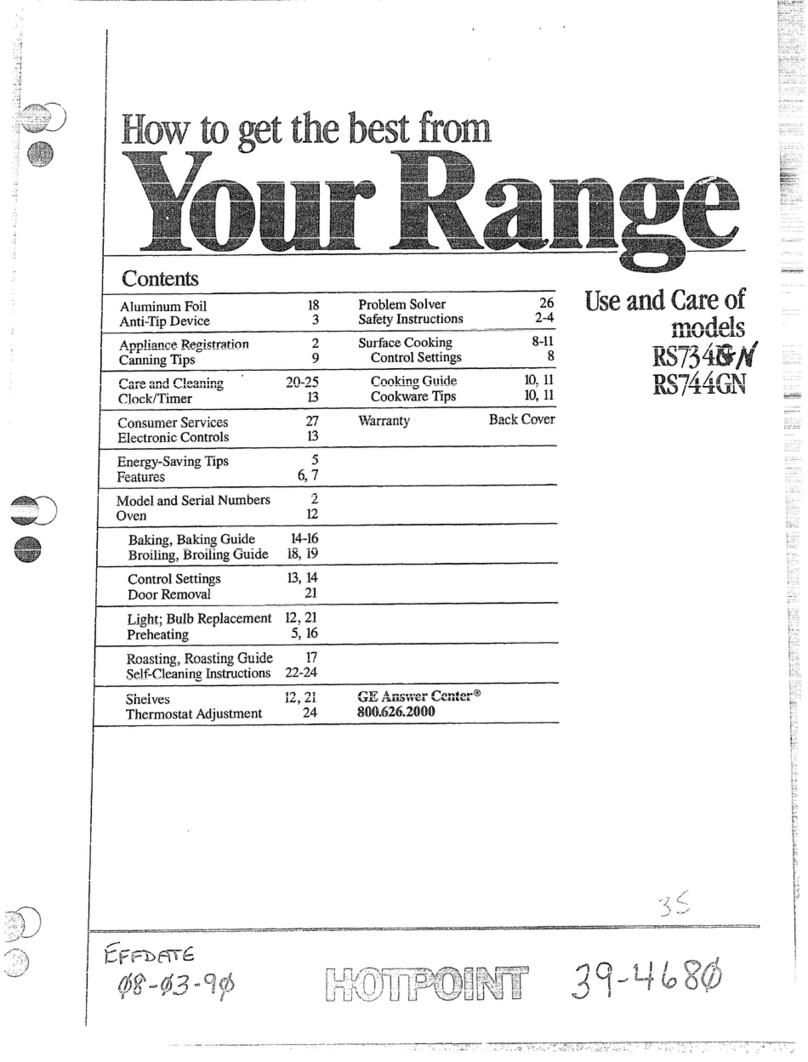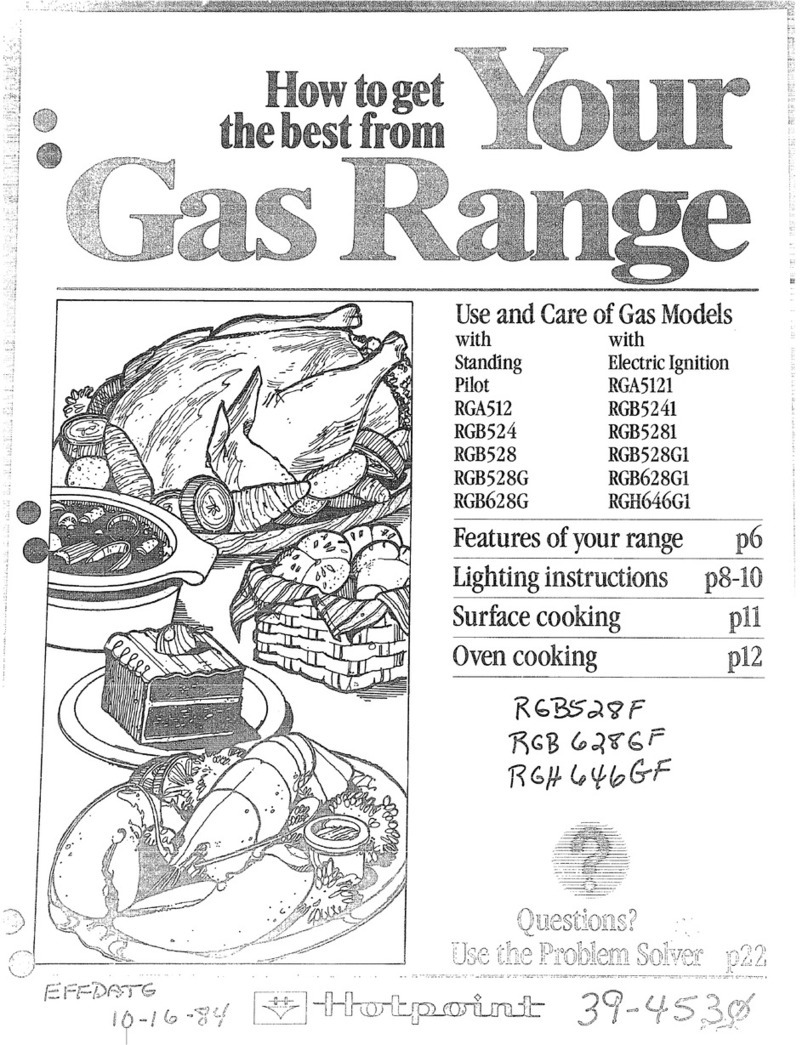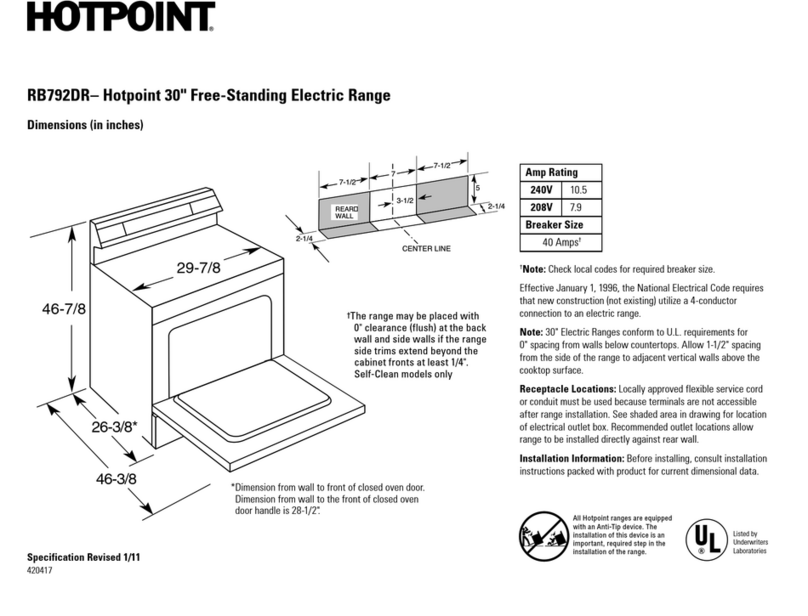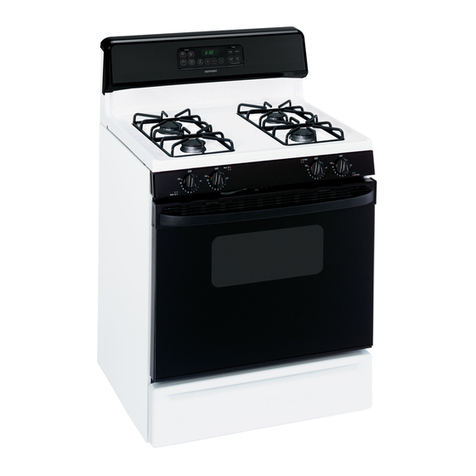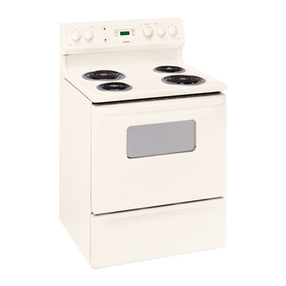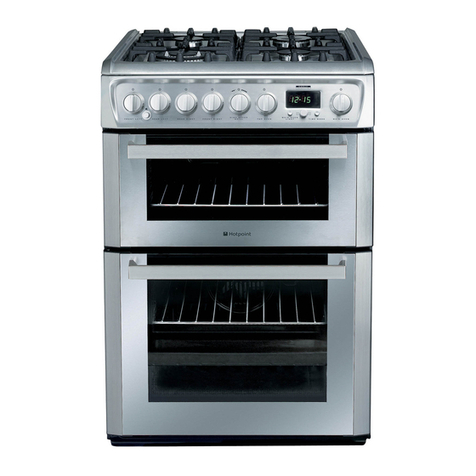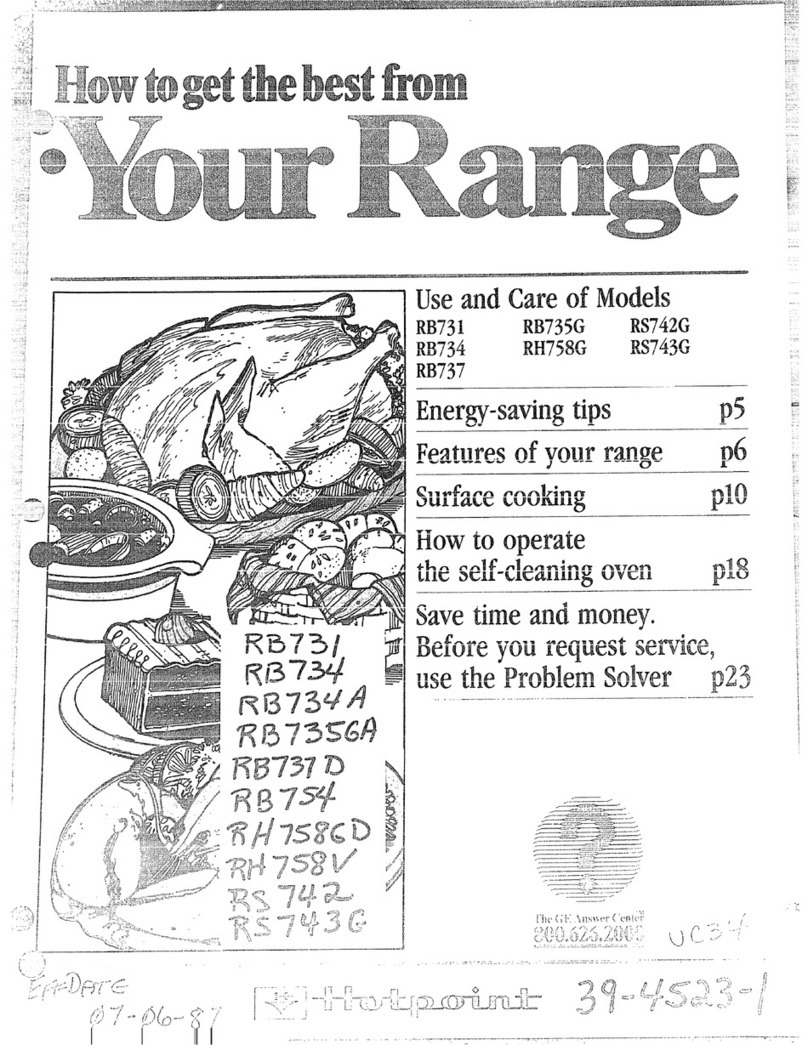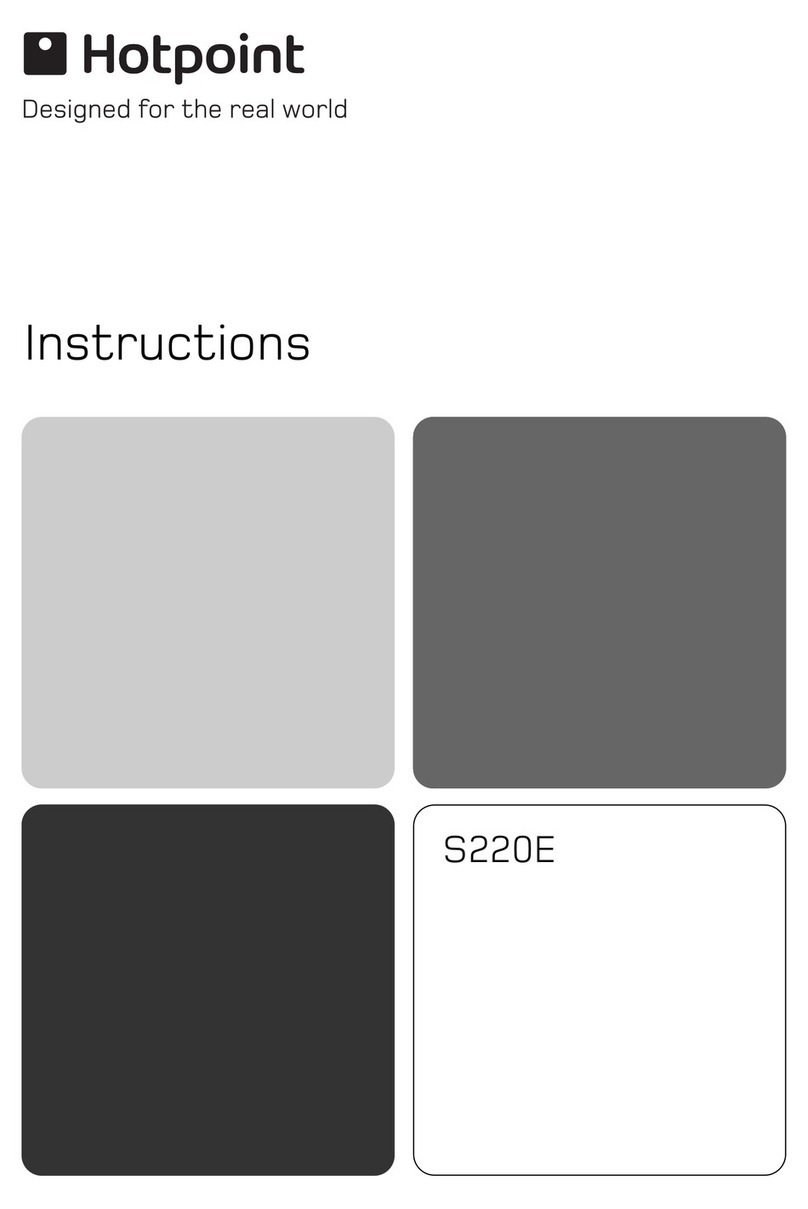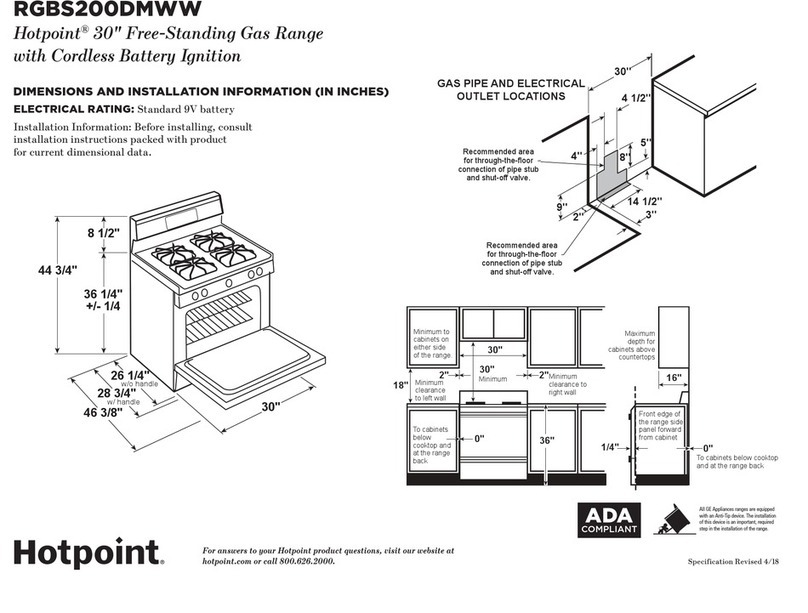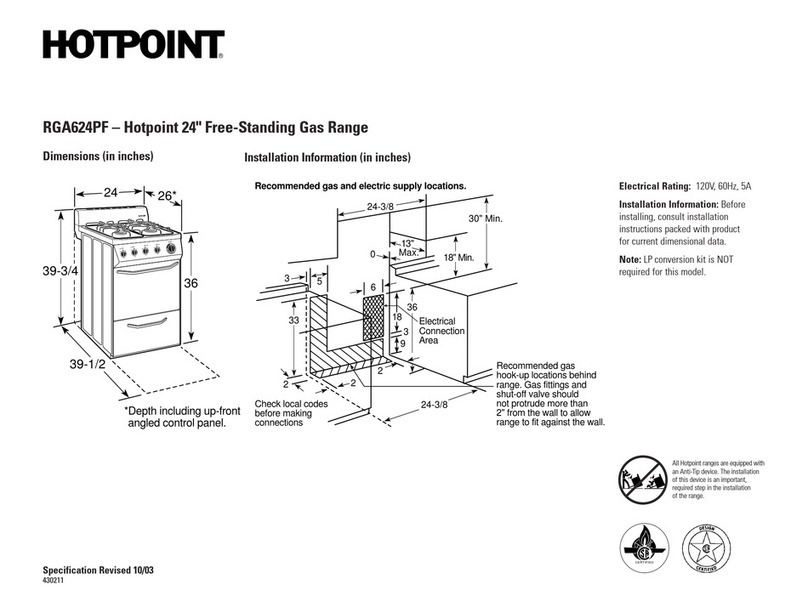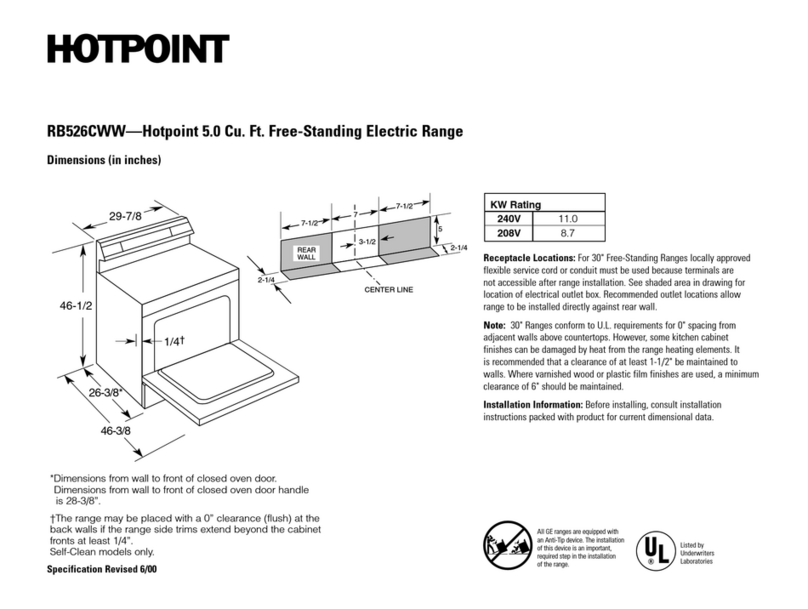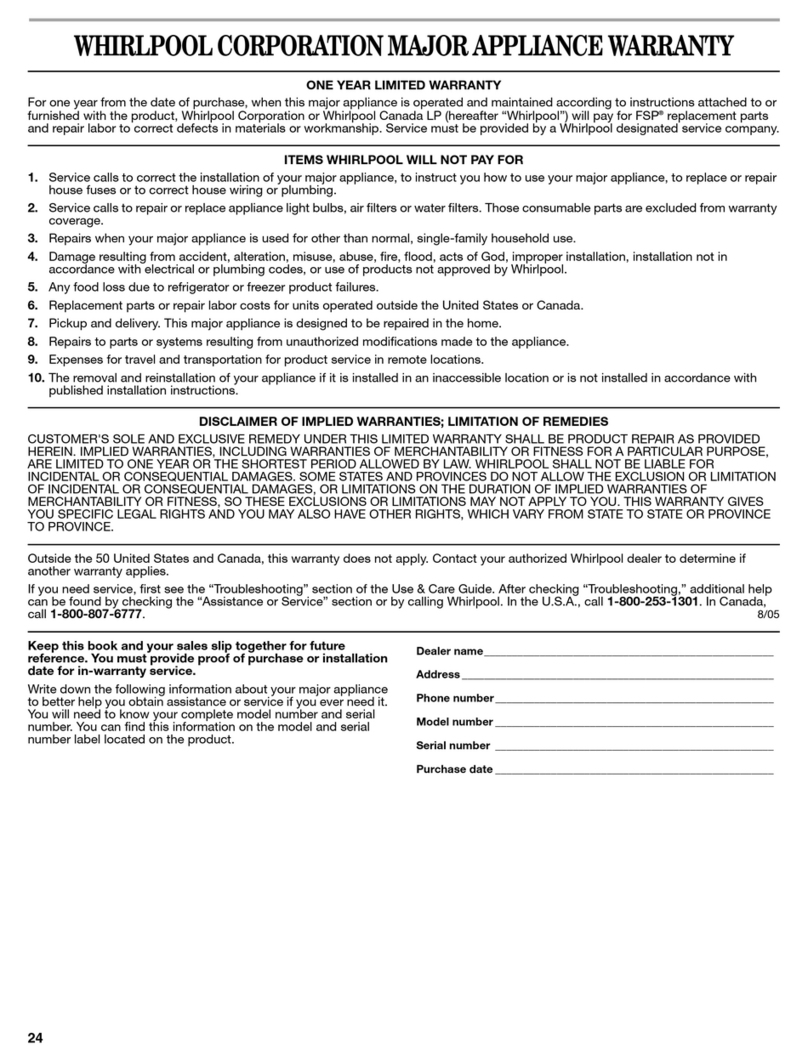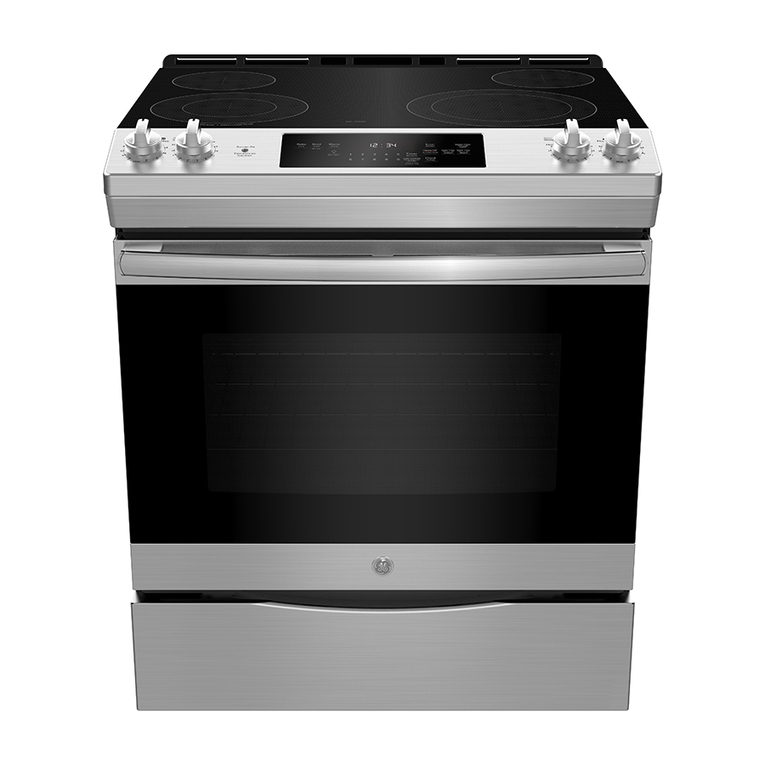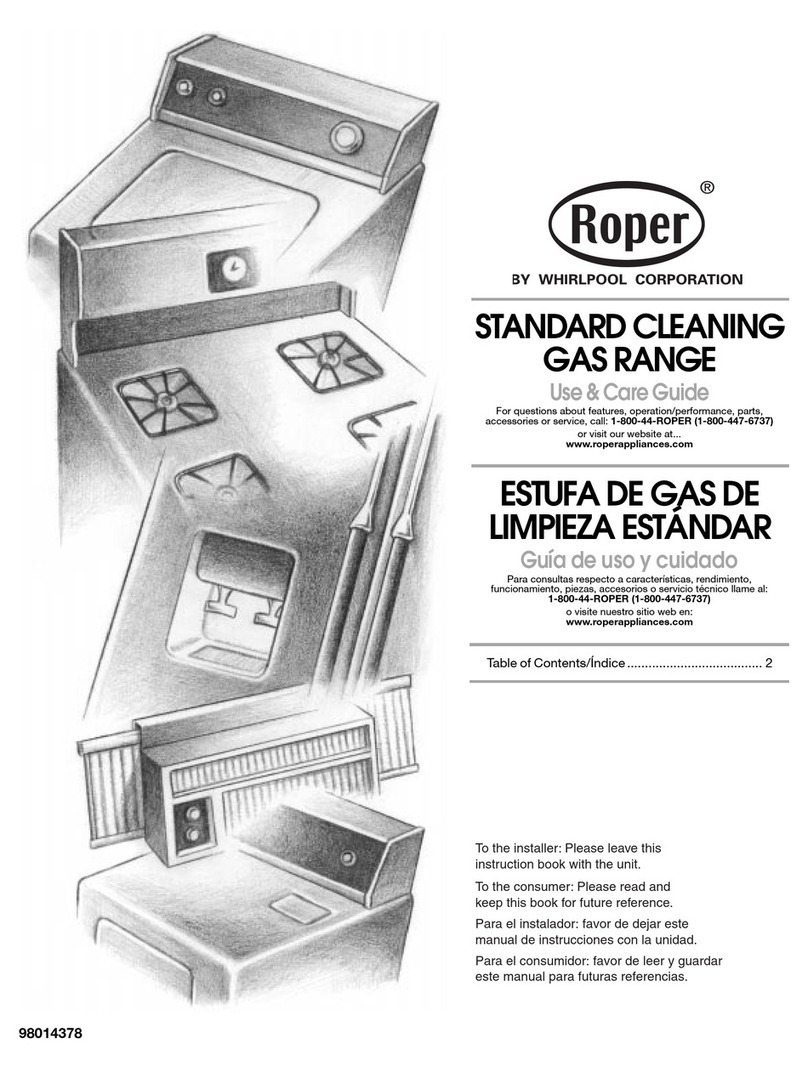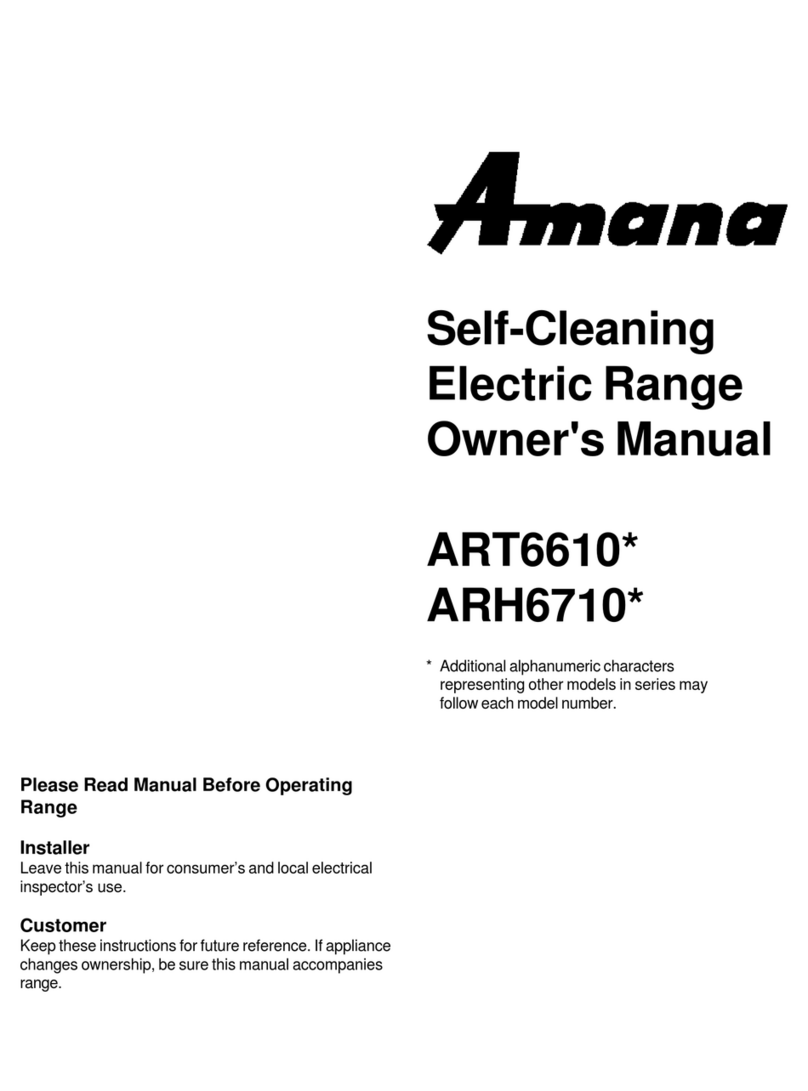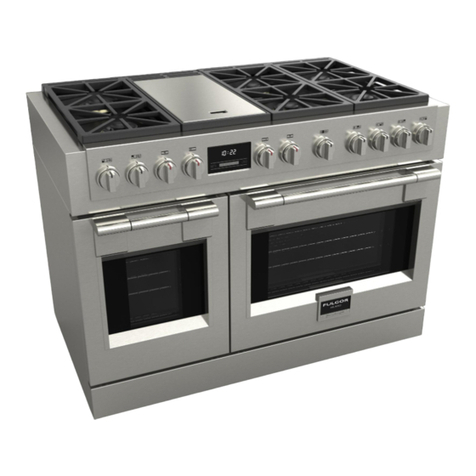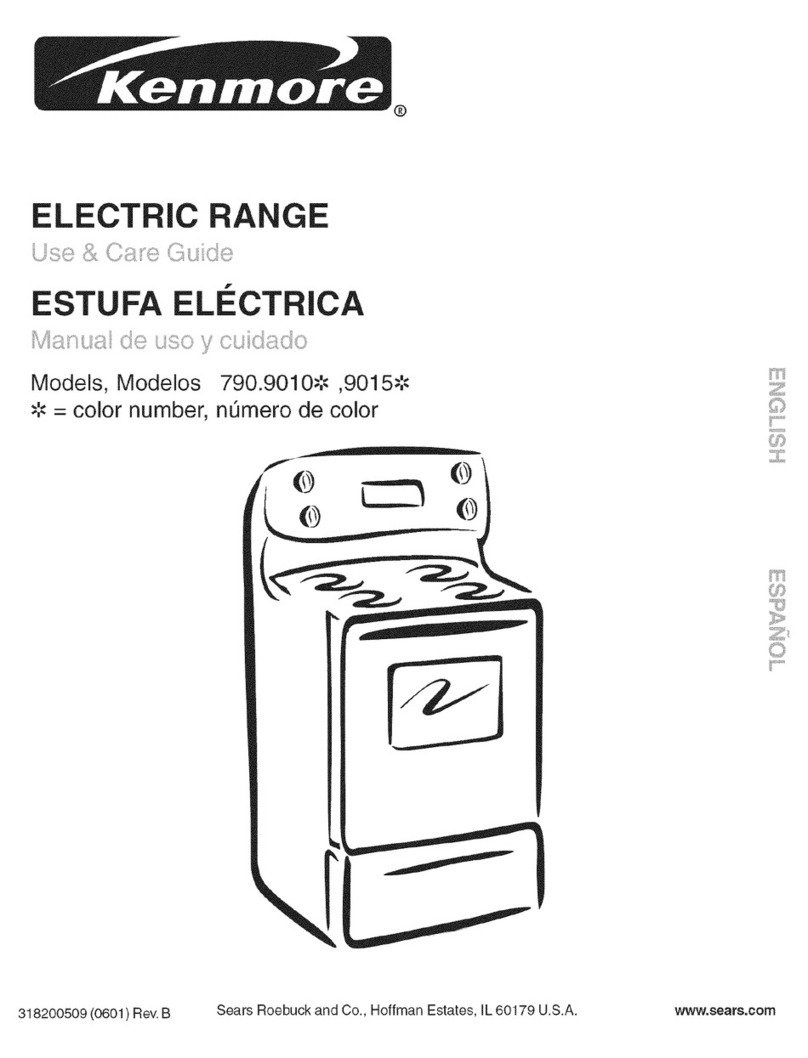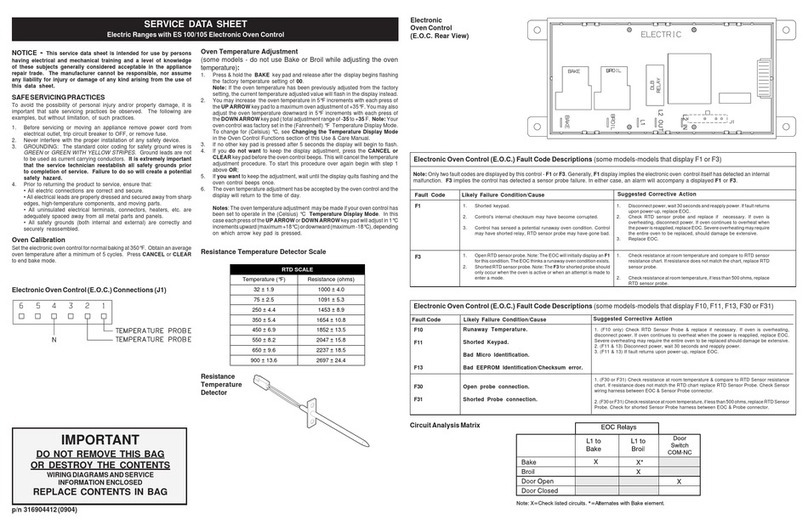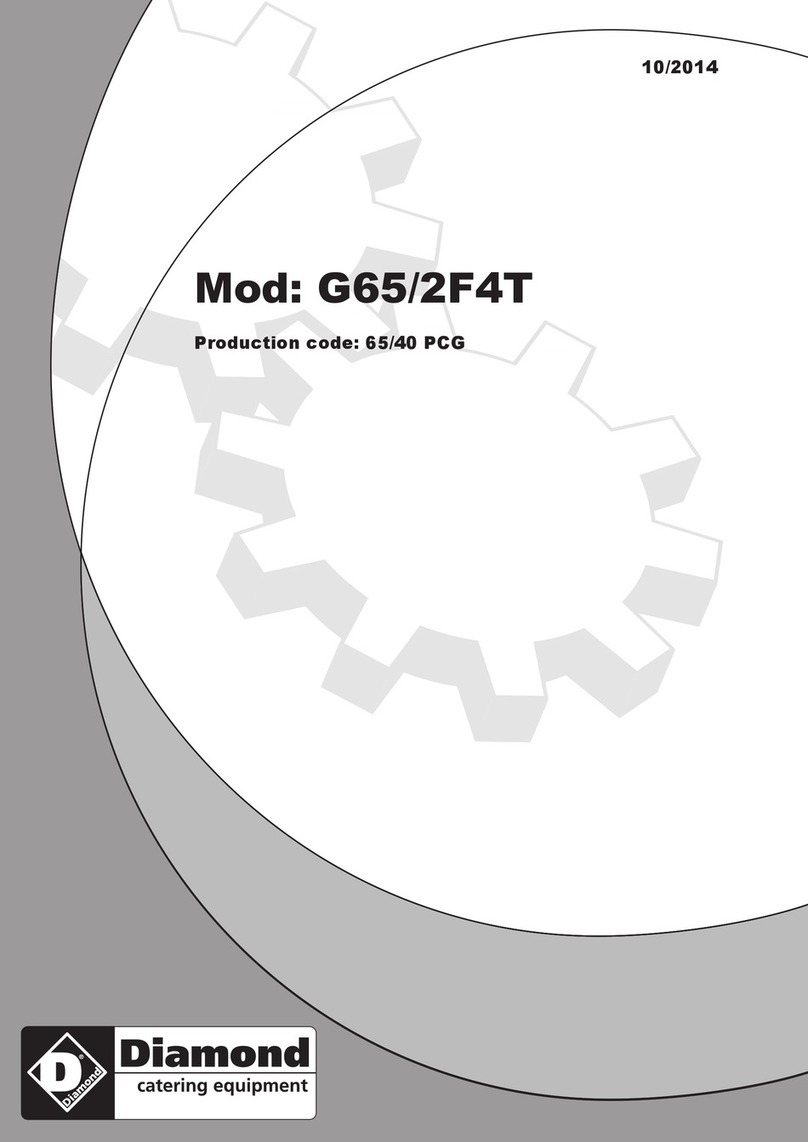
IMPORTANT SAFETY INSTRUCTIONS ❑
1
●
Read all instructions before using this appliance.
(‘~ When using electrical appliances. basic
safety precautions should be followed.
including the following:
●Use this appliance only for its intended use
as described in this manual.
cBe sure your appliance is properly
installed and grounded by aqualified
technician in accordance with the provided
installation instructions.
cDon’t attempt to repair or replace any
part of your oven unless it is specifically
recommended in this guide. All other servicing
should be referred to aqualified technician.
sBefore performing any service,
DISCONNECT THE OVEN POWER
SUPPLY AT THE HOUSEHOLD
DISTRIBUTION PANEL BY REMOVING
THE FUSE OR SWITCHING OFF THE
CIRCUIT BREAKER.
., AWARNING—AH ranges can tip tind
injury could result. To prevent
accidental tipping of the rtingc
from abnormal usage. including
excess Ioadin: of the oven door.
Iattach it to the wall or [1OOI.by
installing [hc An(i-Tip dc~icc
supplied. To insure [he device is
properly inst:llled and Cngagedq
rcnlo~’cthe drawer panel and inspect
the rear-lmwling leg. MAe sure it
fits securely.
[f you null the range (WIfrom the wall for anv
re;som’ make surclhc dc~icc is properly en@@
before you push the range back. Plctise refer to the
Anti-Tip device information in the back of this
book. Failure to take this precaution could result in
tipping of the ran:e and injury.
●Do not leave children done-children silould
not be left alone or unattended in an area where on
appliance is in use. They should never be allowed
to sit or stand on any part of the uppliance.
.Do not allow anyone to climb. stand or hang on
the door. They could damage the oJIen.
...
Q?&
●CAUTION: ITEMS OF INTEREST TO
CHILDREN SHOULD NOT BE STORED IN
CABINETS ABOVE AN OVEN. CHILDREN
CLIMBING ON THE OVEN TO REACH
ITEIMSCOULD BE SERIOUSLY INJURED.
.Teach children not to play with the controls or
●
●
any other part of the range:
Never leave the oven door open when yOLIare
not watching the range.
Never wear loose-fitting or hanging garments
while using the applian;e. Be ca;ef;l-when
reaching for items stored in cabinets over the
oven. Flammable material could be ignited if
brought in contact with hot hetiting elements and
may cause severe burns.
“DO NOT STORE OR USE COMBUSTIBLE
MATERIALS, GASOLINE OR OTHER
FLAMMABLE VAPORS AND LIQUIDS
IN THE VICINITY OF THIS OR ANY
OTHER APPLIANCE.
757
cUse only dry pot holders—moist or
%‘dwnp pot holders on hot surfacts may
result in burns from steam. Do not ]et
pot hok.lcrs touch hot heating elements. Do not
usc atowel or other bulky cloth.
GFor your safety, never use your appliance for
warming or heating the room.
●Keep hood and grease filters clean to muinttiin
U()()~ ~~~]~ting aIId to uvoid grease fires.
e
cDo not let cooking grease or other flammtible
materials accumulate in or near the oven.
w
4
k‘,.’ .Do not use water on grease fires.
-Never pick up aflaming pan.
uSmother tlaming pan on surfiice unit
by covering pan completely with well-fitting lid,
cookie sheet or tlat tray, or if available, use adry
chemical or foam-type extinguisher.
Flaming grease outside apan can be put out
by covering with baking soda or. if available,
amulti-purpose dry chemical or foam-type
fire extinguisher.
Flame in oven can be smothered completely by
closing the oven door and turning the oven
control to OFF or use adry chemical or foam-
type extinguisher.
3
. .
